HP has new 1L PCs and a new naming scheme as well. Whereas previous generations were the “ProDesk” and “EliteDesk” lines, now they are just Pro and Elite. What is exciting about this new generation is that we have Intel Alder Lake PCs with both DDR4 and DDR5 options, and some really interesting support options. HP is launching a complete line, but we are just going to focus on the Mini units and the Z by HP Z9 Mini units that we cover as part of Project TinyMiniMicro.
HP Elite Mini 800 G9 With Alder Lake Launched
Recently we covered 12th Gen Intel Core T-Series 35W TDP CPUs Launched as the new Intel Alder Lake generation moved downmarket to the T series lower-power CPUs. Alder Lake was first launched with the higher-power enthusiast CPUs.

As part of the new G9 generation, we get DDR5 support that is part of Alder Lake but with a twist, not on every model. With the optional GPU, we also get up to eight display outputs using the three onboard, one optional, and four via the GPU. That is a lot of display outputs for a 1L PC.
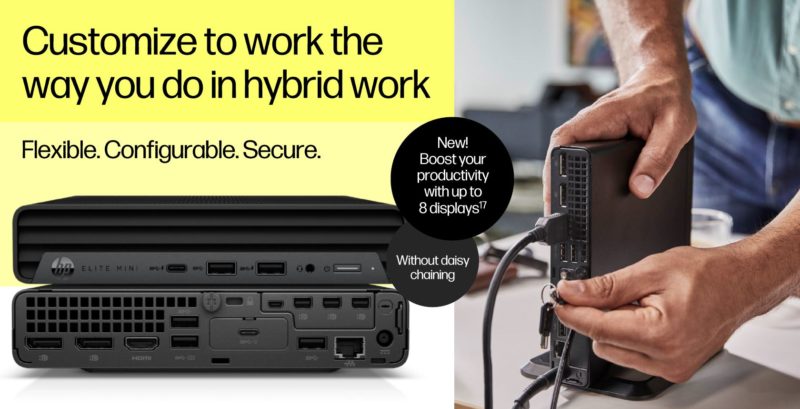
Getting to the specs, we see that we get a lot of really cool features. First, we get 65W CPU support as well as support for the new NVIDIA RTX 3050 Ti. Part of the Elite(Desk) Mini line is supporting a lot of higher-end configurations. We also get up to dual M.2 SSDs and an optional 2.5″ drive.
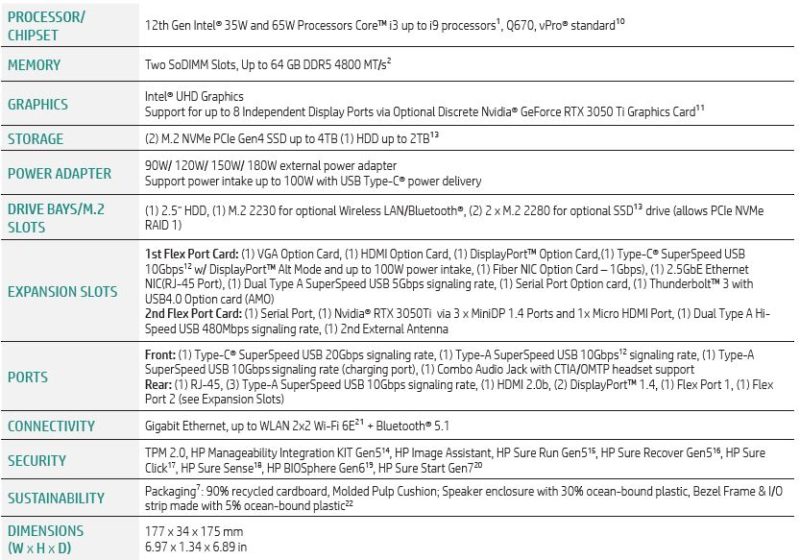
One other really interesting one is that we have the option for a 2.5GbE port. We actually have two HP G8 units on order with 2.5GbE ports, but even after ordering weeks ago, HP pushed our ship date to March 2022. We hope to get to show this off soon.
One step lower is the Elite Mini 600 G9. Years ago the 600 series was a ProDesk model, now it is Elite.

Here we can see that we only get up to Core i7 and vPro becomes optional. We also still get the DDR5 support and RTX 3050 Ti option like we get on the 800 G9.
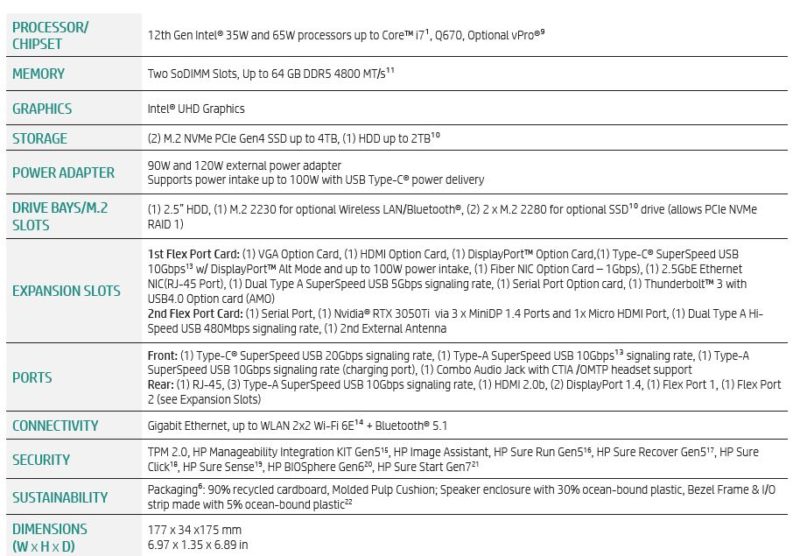
It seems like the line between the 600 and 800 series is smaller than it has been previously. Moving to the Pro 400 series, we get more differentiation.

Here we get big changes. We get only 35W TDP CPUs, not 65W. There is also no GPU option. We also only have DDR4 support, not DDR5. What is interesting as well is that we get the Q670 chipset. In previous generations, the Pro(Desk) 400 series would use a lower-end chipset and not have access to vPro which is an option on the new model. Also, we get only a single M.2 SSD here.
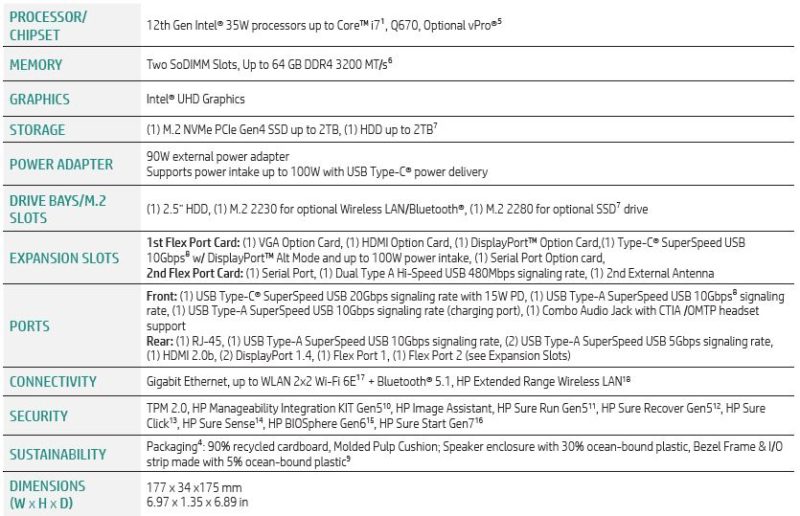
Overall, there is a lot new here. We will also just quickly note that there is a new Z2 Mini G9. HP is focusing a lot of attention on the SFF G9 in this release, but we had a lot of questions around the Z2 Mini so we did the HP Z2 Mini G4 Tiny series.
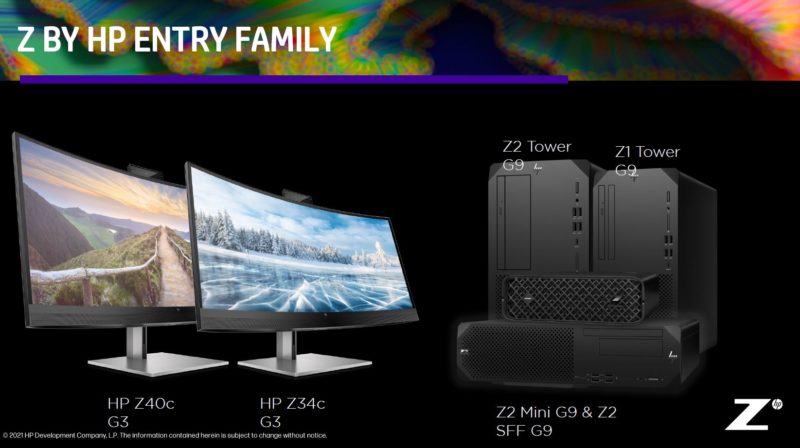
We will look into reviewing these as well.
Final Words
The Intel Core i9-12900T with its mix of performance and efficient cores looks like it might be a game-changer in this space. DDR5 will be a change. We have been covering the 1L PC from Lenovo, HP, and Dell since the 6th Gen Intel Core processors where DDR4 was introduced as part of Project TinyMiniMicro. We wish that HP made 2.5GbE standard in this generation. Still, there are many exciting options in this generation.

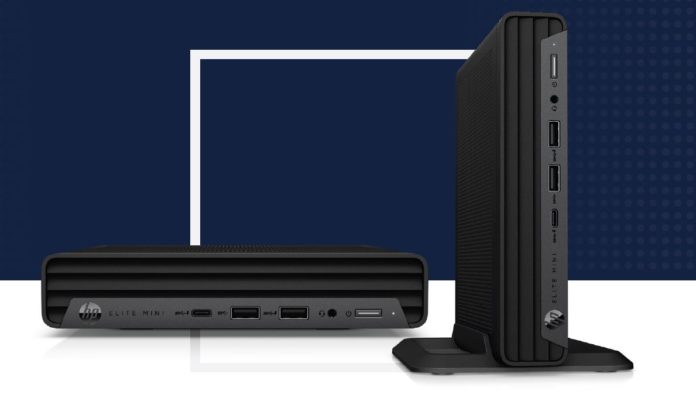
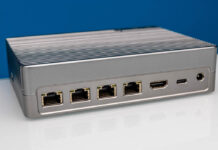
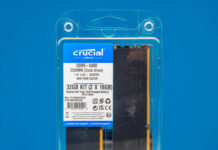
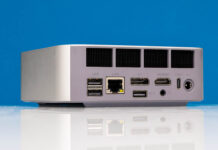
The G6 had 90W processors like mine’s i9-10900K. Available, then again this one offers TB3 as an option so at least you can use a TB3 10G Ethernet NIC like the QNAP one. I’m looking forward to the Z2 Mini G9 as an upgrade to my G4 main server, where ECC memory is not optional, and the new case is an improvement over the crackpot octagonal one.
Are we going to skip past this nugget of wonderful-ness?
“Supports power intake up to 100W with USB Type-® power delivery”
You can power it via USB-C PD! I have been waiting for mini desktops that do this!
every time I look at the latest desktop computers I’m not holding my breath but I am waiting for signs of water cooling models that share a exchanger and pump between say four desks in a island. I should like to be able to plum in gravity feed and DC from the ceiling, and disperse heat via standard under floor copper 5/8ths pipes.
if I didn’t know how laborious it is to merely attempt to obtain BOM quotation for well formed purchase orders for building infrastructure components and hardware, from the architectural supply chain distros, from which I don’t fancy extrapolating the inverse procedure necessary for inserting new products successfully into the quantities surveying layers of facilities architecture, I would have started designing what I want myself years ago. (I’m nevertheless very willing to share with any enterprising mid scale contractors out there and I am a Brit but entirely comfortable working to US codes and perfectly happy to do the necessary Rain Man-eque poring over standards required up to and including obtaining standards documents and preparing applications for certification – providing you have enough patience with the progress of a dedicated amateur with fairly modest EE and quantitative career experience, that is)
I have seen the future of extremely distributed extremely small and hot processing, and I believe the heat should be exhausted into storage radiators installed in the homes of qualifying seniors..The UK has extraordinary poverty in post retirement age groups particularly in our colder Rust Belt North where I hail from.
the reason behind my thinking is that analogy likening the ubiquity of general purpose processors to the universal installation of motors. Once the USP – powered motion or physical force on demand – now neither the electric motor in your laundry white goods nor the micro controllers are remarkable ;
so in the similar manner, why not try being blase about putting computing resources in my tropical fish tank, or surrounding metal pipework with cylindrical heat sinks and offering wired connections through the stud wall or for that matter, I can imagine the electro magnetic isolation inside my house plumbing and the physical protection afforded, might very well give me far better Cat 6a runs, given the stiffness and high minimum radii of the limit of long run copper today.
I installed 6a into my London apartment in 2011 in possibly my greatest construction folly ever. At the same time as wet central heating..Into concrete so tough we had the same contractor removing Londons largest high tension pylon national grid substation interchange from the site of the Olympic swimming pool, sending even bigger guys each day for a week. Until the area Foreman came by on his way to the Olympic site and the petite yet powerfully wiry chief whipped out his personal grinder and finished our chases and soffit in a hour plus hot running sweet milky tea. The secret? A lot of technique. But also a three hundred dollars blade made by a little known manufacturer called Marcrist.
No doubt the UK doesn’t have a monopoly on top diamond cutting blades, but it is thoroughly enjoyable looking through some of the precision jobs they saved from abject failure, such as trimming a 2.5mm shim from a immovable multi thousand tonnes lock gate decades stuck in disuse. Definitely precision and I realise that American construction is a whole different arena, but I have found applications for the 8″ blade I bought for myself for a expected white elephant self indulgence, making way for fiber runs in a customers building where decades back to twisted pair had concealed into a major excavation project, and cutting a inch by 3/4 inch chase, radii as well, has to be the most fun had on a site visit for a long time.
I’m sorry for rambling far from the original topic, but I had hoped that this might be interesting to the home lab / home network and DIY audience of STH, who may very well have time and application enough to use these modest thoughts. In which case, and the last from me on anything of the like (I am going to check out forums right now) the Swiss tool maker Perles make the most amazing non SDS 120V 10A wired hand drill with a 5/8 standard chuck that puts normal 8mm steel bits through literally just anything that I’ve ever encountered. Spins up like a jet engine with the torque. I paid less than $150 US new via Amazon and sold my Hiltis. Almost a tenfold difference between the prices and the underdog wins incomparably.
Philmatic,
here in the UK, domestic electric supply comes with a “Economy 7” feed on a overnight demand regulation discount tariff and the standard application is for storage heaters. My next project is diverting the cheapest rate electricity available to me, into battery storage for 24/7 running my home network.
I’m going to take my thoughts to the forums now, but if any Brits are reading this and keen on discussion about building enterprise grade home networks with a little extra flair, I shall be lurking as loudly as polite and permitted : with intent on sharing a bunch of plans and discovery and sources of interesting components. The British government is paying handsome one off cash sums to ISP’s for connecting domestic customers to “next generation Internet” which followers of the local market know has been a abysmal failure. I’ve been investigating the possibility of setting up a distributed hyper local community company ISP to see if it’s possible to do this street by street. Open Reach still lease pairs of twisted pair from CPE to local exchange for a regulated and reasonable rate. PtP 5G is looking like the government subsidy might carry the capital cost of a sufficiently densely subscribed distribution point. I have been following this super series of slim and mini PC models with great interest especially in the cooling performance and a special, with a view to the nodes necessary for my ideas. I’m looking at organising the import of used SKUs reviewed here, as well.
Fazal,
do you mean that ECC isn’t a option on your G4?
(I’m a confused if you are referring to a DL G4 series rack mount server, or a earlier Z2, but I think you mean the earlier Z2?)
I can’t go more blue in the face going on to our HPE reps, that ECC options for smaller PC hardware is absolutely desirable to everyone who I know, everyone of our customers would check that box when ordering for sure. It’s actually situations where somebody like our company is bundling hardware with services and would be affecting a disproportionate volume of orders compared to our diminutive scale, that I can’t believe is still, apparently, a marketing – product management blind spot.
aha! thanks Fazal, now I I have worked out what that strange looking object on the top of the lower SFF model is, in the picture “2022 Z By HP Entry Family” – or have I? Is that a full mesh grille Z2 with front to back airflow? Pretty please HPE!
Where is the Dell model? They did not even release 11gen for micro yet.
jmk, please take your medicine.
Absoloute monster for the size of the thing, I’d love one. Eager to see performance.
@Philmatic Yes, been waiting for power intake power delivery on a mini PC too! This is a big deal. I can now power it with the same cables and power adapters as my laptops.
I wonder if you can get the Discrete GPU separately.